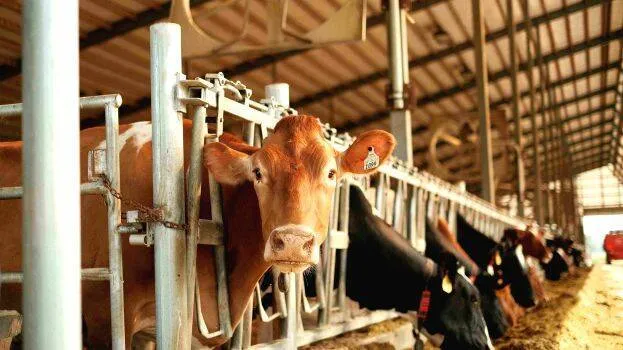

There is an old saying in villages: “Tempt them and then make them starve.” That is exactly the situation Kerala’s dairy farmers face today. Every time Milma raises the price of milk, it is announced that most of the increased income will go to the farmers. The share is even declared openly. But soon after comes the notice of a price hike for cattle feed, produced by Milma itself and the government-owned Kerala Feeds. Farmers say this is nothing but giving with one hand and taking away with the other. When Dairy Development Minister J Chinchurani recently told the Assembly that milk prices would be raised this December, farmers were left asking the same old question: “Is it only to give and then take away?”
The last time Milma increased milk prices was in December 2022. At present, the market price of one litre of blue-cover milk is Rs 52. If the milk meets Milma’s standards for fat and solids, farmers get an average of Rs 44 per litre. But since the last price hike two and a half years ago, the cost of cattle feed, fodder, hay, mineral mixtures, and medicines has gone up several times. Farmers say that maintaining a cow that gives 10 litres of milk costs about Rs 350 per day. After meeting expenses, the leftover is barely enough to run a household. Because of these losses, nearly two lakh dairy farmers in Kerala have quit cattle rearing in the past two years.
The upcoming price hike is based on the report of a five-member expert committee. The minister said in the Assembly that the increase will be implemented in December and that farmers will get the maximum benefit. But farmers say past experiences give them little hope. Meanwhile, on the day GST reforms came into effect, Milma had reduced the prices of its dairy products. GST on butter, ghee, paneer, and other dairy fats was cut from 12% to 5%, and paneer was exempted completely. Milma gained from this tax cut, and part of the benefit was passed to consumers. But farmers, who supply the basic product—milk—say they are left only with debt and tears.
Both Milma and the state government should not ignore this grievance. The rise in coconut prices in Kerala is mainly due to the high cost of tree maintenance, the increased wages for coconut climbers, and the shortage of workers willing to harvest coconuts. Most coconuts in the market today come from Tamil Nadu, and Kerala is fast turning into a “land without coconuts.” If proper support is not given, milk production may face the same fate. So, as another milk price hike is planned, the largest possible share must go to the farmers. And it should not be clawed back later through higher cattle feed prices, as has happened in the past.